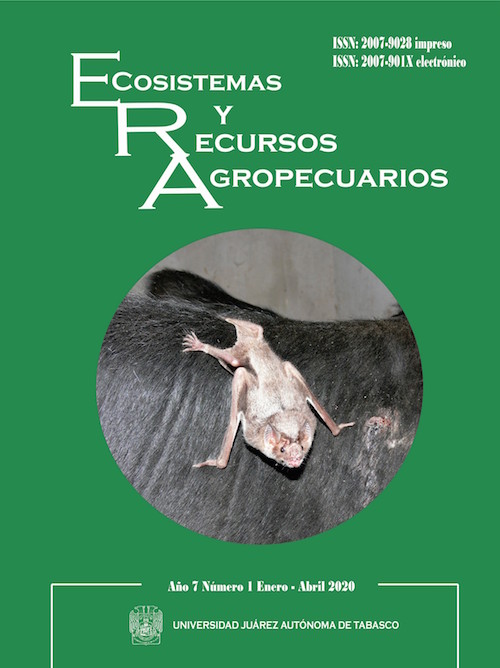Maize particle size with the addition of wheat on zootechnical parameters in chickens
DOI:
https://doi.org/10.19136/era.a7n1.2348Keywords:
, Broilers, corn particle size, coarse wheat, performanceAbstract
T. An experiment was performed to compare in the meal diets different particle sizes of corn, with and without the addition of whole wheat, on the performance of chicken broilers. 2 800 broilers, four particle sizes was compared; T1) 1175 µm, T2) 740 µm, T3) 541 µm, and T4) 398 µm, with and without the addition of whole wheat (5, 10 and 15%). Body weight (kg), feed consumption (kg), feed conversion ratio (kg/kg), and mortality percentage were evaluated at 7, 14, 21, 28, 35, 42 and 45 days. The gizzard total weight and relative weight was recorded at end of the study. The data recorded in each variable was analyzed by general lineal model for factorial design 4 x 2. At 45 days of age, T2 showed the highest body weight (p < 0.01), maintaining a similar conversion feed rate than T3 and T4, without effects (p > 0.05) in mortality rate; while the size of the gizzard was lower (p < 0.01) as the particle size decreased. The diets with the addition of whole wheat, showed higher body weights (p < 0.01), in relation to diets without addition, non significative effect (p > 0.05), was observed in the other parameters evaluated. A significative effect (p < 0.01) of the interaction of particle size 740 µm with the addition of the whole wheat was observed on the body weight at the end of the study, suggesting that this can be alternative for obtain best performance and save money by feed.
Downloads
Downloads
Published
Issue
Section
License
Aviso de copyright
Los autores que se envían a esta revista aceptan los siguientes términos:
una. Los autores conservan los derechos de autor y garantizan a la revista el derecho a ser la primera publicación del trabajo con una licencia de atribución de Creative Commons que permite a otros compartir el trabajo con un reconocimiento de la autoría del trabajo y la publicación inicial en esta revista.
B. Los autores pueden establecer acuerdos complementarios separados para la distribución no exclusiva de la versión del trabajo publicado en la revista (por ejemplo, en un repositorio institucional o publicarlo en un libro), con un reconocimiento de su publicación inicial en esta revista.
C. Se permite y se anima a los autores a difundir su trabajo electrónicamente (por ejemplo, en repositorios institucionales o en su propio sitio web) antes y durante el proceso de envío, ya que puede conducir a intercambios productivos, así como a una cita más temprana y más extensa del trabajo publicado. (Consulte El efecto del acceso abierto).

